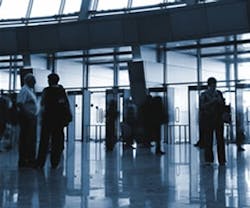Choosing the Best Access-Control System
Access-control systems are critical, both in protecting commercial buildings and maintaining smooth day-to-day operations. In recent years, major digital and biometric advances have evolved to combat ever-changing threats, which can make navigating the security landscape more difficult. It is important to understand, however, that the best security system for a property is not always the most advanced system. Careful assessment of security needs and goals will help property managers select a system to best match their building needs and lay the foundation for a secure building.
Anything - intruders, criminals, disgruntled employees, terrorists, natural disasters, and more - that could harm the critical operations and assets of a business is considered a security threat. So, consider the following factors when selecting an access control system.
Location and type of property. Buildings located near transportation and cultural centers or tourist attractions are inherently at higher risk of crime and terrorist activity, and may need extra protection. Research any history of threats to the building and surrounding area by contacting the police department.
Tenant needs and goals. Consider whether tenant companies are high risk. While all businesses have unique security concerns, chemical companies, government offices, and banks require additional security precautions that must be taken into consideration when selecting an access-control system for the entire building. Learn tenants' security goals, risks, and plans. Go one step further and inquire into the security mindset of employees. What types of security systems do tenants feel comfortable using, for example? Getting tenants on board with an access-control system will make the execution of security measures far more effective.
Building traffic. Evaluate the collective tenant base. A retail tenant or healthcare provider with walk-in visitors will greatly increase the amount of traffic in the building. Come up with a program for handling visitors and avoiding lobby congestion; always be consistent in following protocol.
Cost. New security developments include biometric systems, CCTV, and smart cards, with biometrics generally being the most expensive and smart cards the least expensive. Building owners should find a system that is both effective and affordable; many have found creative ways to offset the cost of an upgrade to a more advanced and expensive security system. For example, if tenants hire building security to administer security systems for their individual offices, the entire building system is both better integrated and more affordable.
Life of the system. Consider the useful life of the systems and any future building needs. Security technology will continue to advance, coming up with better, more cost-effective methods. Security systems should be reviewed every 3 to 5 years to ensure that systems are up to date.
The security industry is making enormous advances as it progresses toward technological independence, but there is also no true substitute for the watchful eye of a highly trained security officer. A combination of state-of-the-art digital access and guard systems, along with multiple layers of security precautions, will give building owners confidence that they have provided the building and their tenants with a safe and secure place to work.
David A. Reiss is senior vice president at New York City-based Alliance Building Services' Classic Security Group (www.alliancebuildingservices.com).
